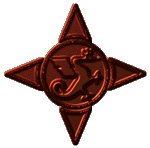he
three bastions we see today in the Lower Town are the only remains of the former
fortifications. They date back from the 16th century.
There
were five of them originally. Bishop Armand Bazin de Bezons ordered in 1764
to demolish the two others together with the ramparts. The fortifications were
replaced by the Boulevards.
The
surroundings of Bastion St Martin (or St Martial) were opened out recently,
so that we now can see it as it was constructed four hundreds years ago. This
big circular building, partially covered with ivy, is situated next to Boulevard
Omer Sarrault and the little public garden. Café terraces, cinemas, shops,
a tide of pedestrians make this place one of the liveliest in Carcassonne.
This bastion does not
stand at an angle of the hexagon formed by the Lower Town, so we can suppose
the original lay-out of the bastide was different from the current one.
Montmorency's bastion
is situated on the southern side of the Lower Town, near the Dome and the
Old Bridge.
It is classified as a National Monument. It was built in 1540 and shelters
a botanical garden.
But if you want to visit
this botanical garden, you will have to get into the courtyard of a private
hospital. This bastion was once the seat of a freemasons' lodge (18th &
19th centuries). Frescoes and engraved symbols still testify their presence.
The Big Tower, also called
Tower of the Mills, was an element of the fortifications, too. It was
covered with windmills. Those mills, built in 1599 had to supply the city
with "300 breads everyday for the poor."
A
religious congregation bought the place at the beginning of the 19th century
and fitted out a little garden and chapels. This is the very peaceful Calvary
Garden.



